Abstract
Although the impact of acidification on planktonic grazer food webs has been extensively studied, little is known about microbial food webs either in the water column or in the sediments. Protozoon-bacterium interactions were investigated in a chronically acidified (acid mine drainage) portion of a lake in Virginia. We determined the distribution, abundance, apparent specific grazing rate, and growth rate of protozoa over a pH range of 3.6 to 6.5. Protozoan abundance was lower at the most acidified site, while abundance, in general, was high compared with other systems. Specific grazing rates were uncorrelated with pH and ranged between 0.02 and 0.23 h-1, values similar to those in unacidified systems. The protozoan community from an acidified station was not better adapted (P = 0.95) to low-pH conditions than a community from an unacidified site (multivariate analysis of variance on growth rates for each community incubated at pHs 4, 5, and 6). Both communities had significantly lower (P < 0.05) growth rates at pHs 4 and 5 than at pH 6. Reduced protozoan growth rates coupled with high grazing rates and relatively higher bacterial yields (ratio of bacterial-protozoan standing stock) at low pH indicate reduced net protozoan growth efficiency and a metabolic cost of acidification to the protozoan community. However, the presence of an abundant, neutrophilic protozoan community and high bacterial grazing rates indicates that acidification of Lake Anna has not inhibited the bacterium-protozoon link of the sediment microbial food web.
Full text
PDF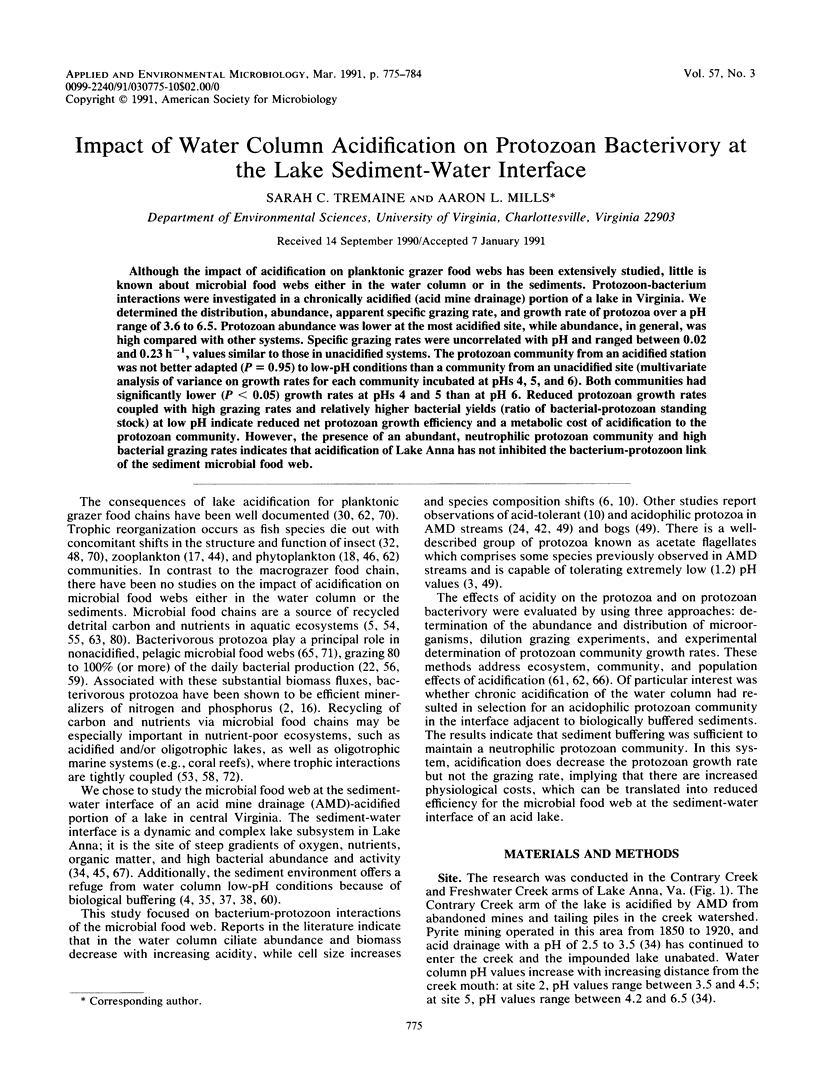

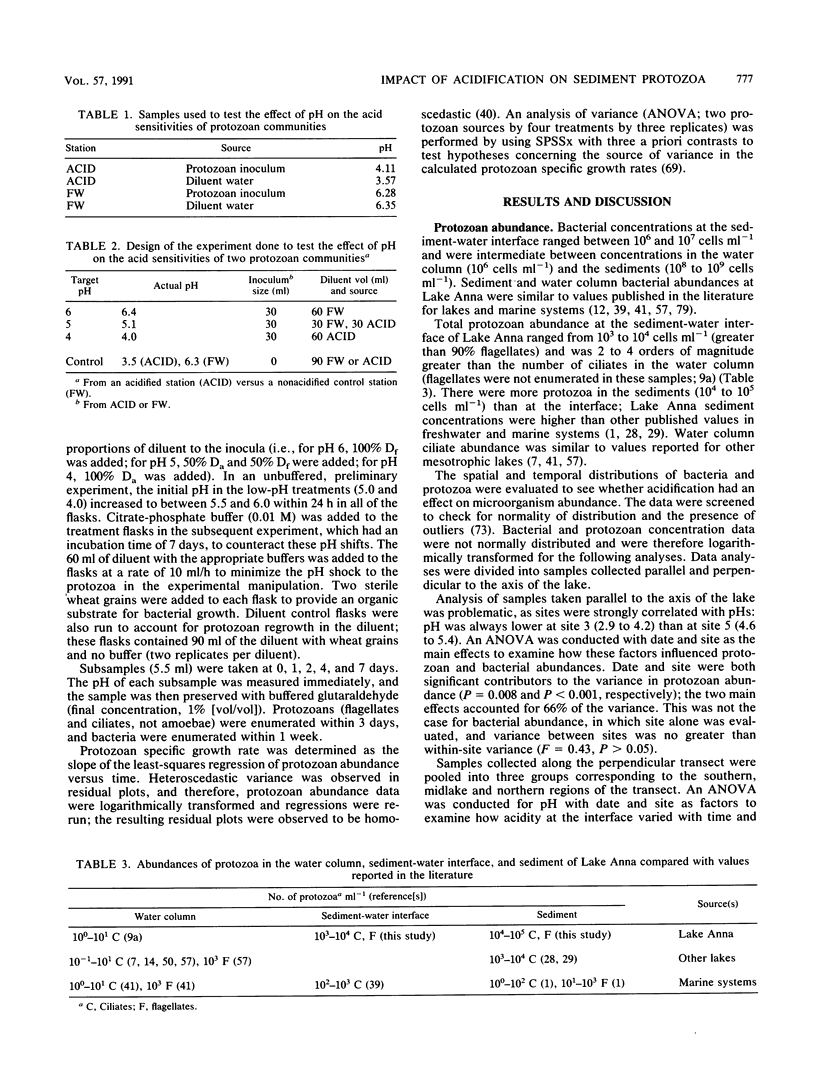
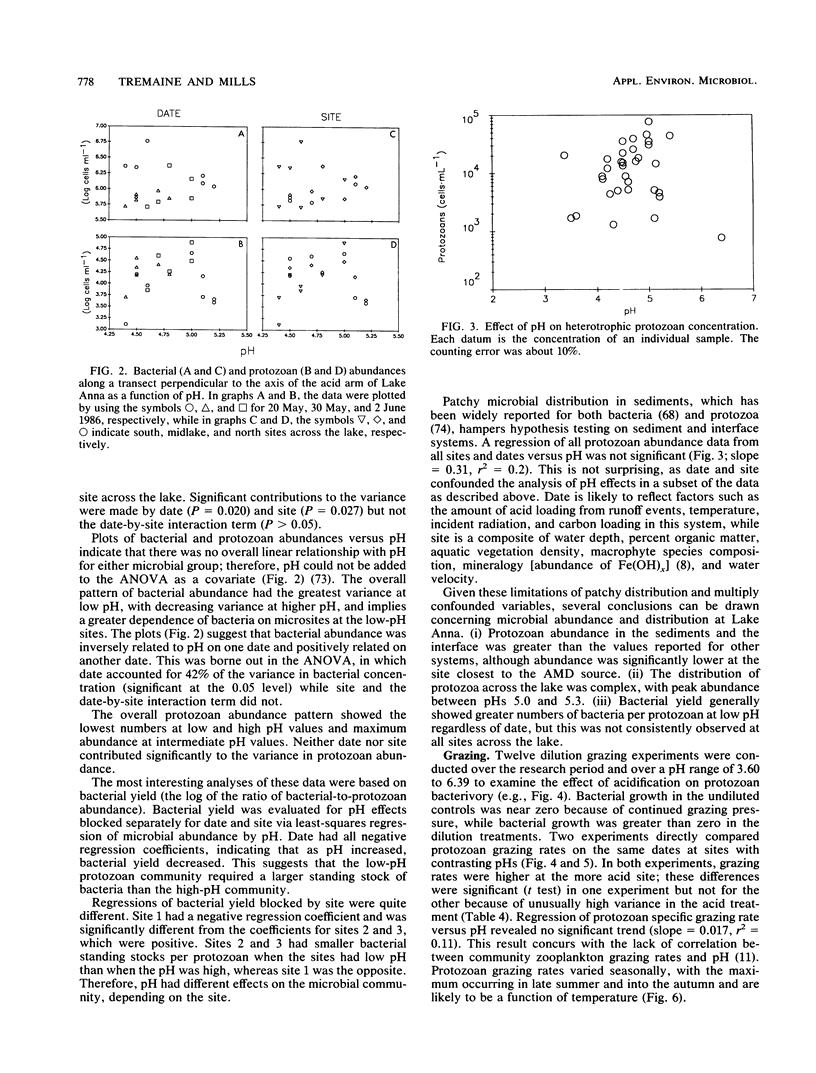

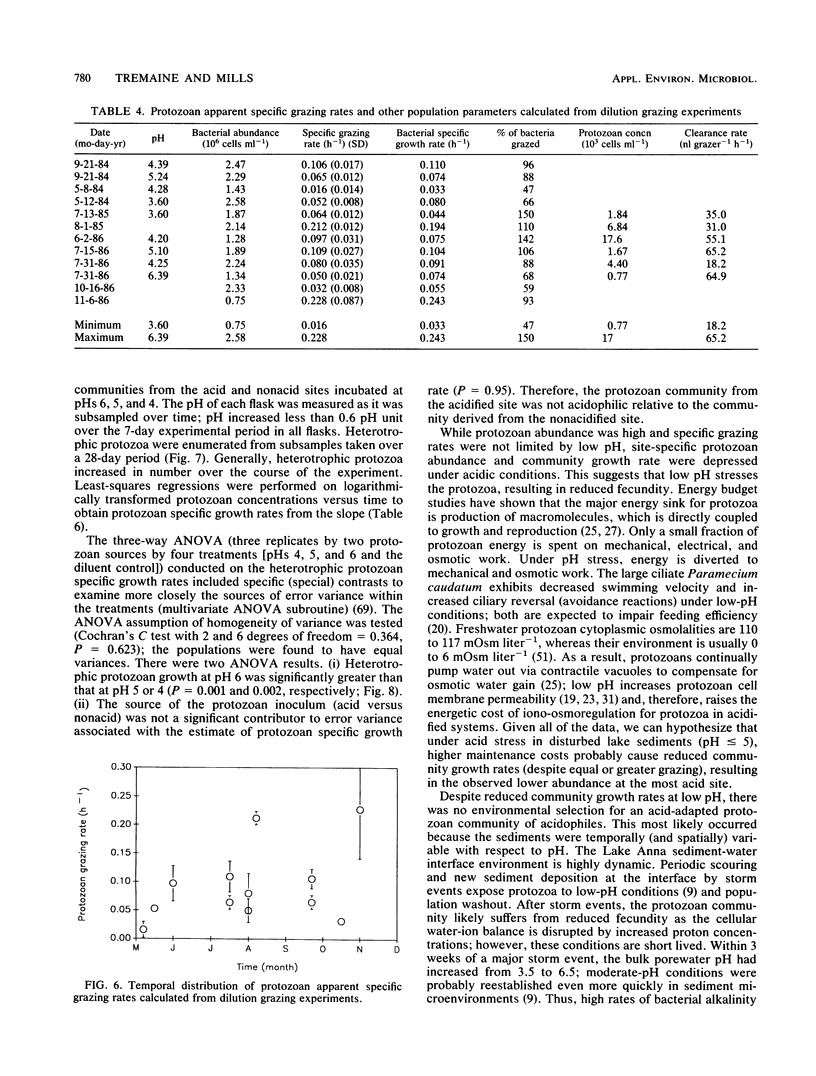

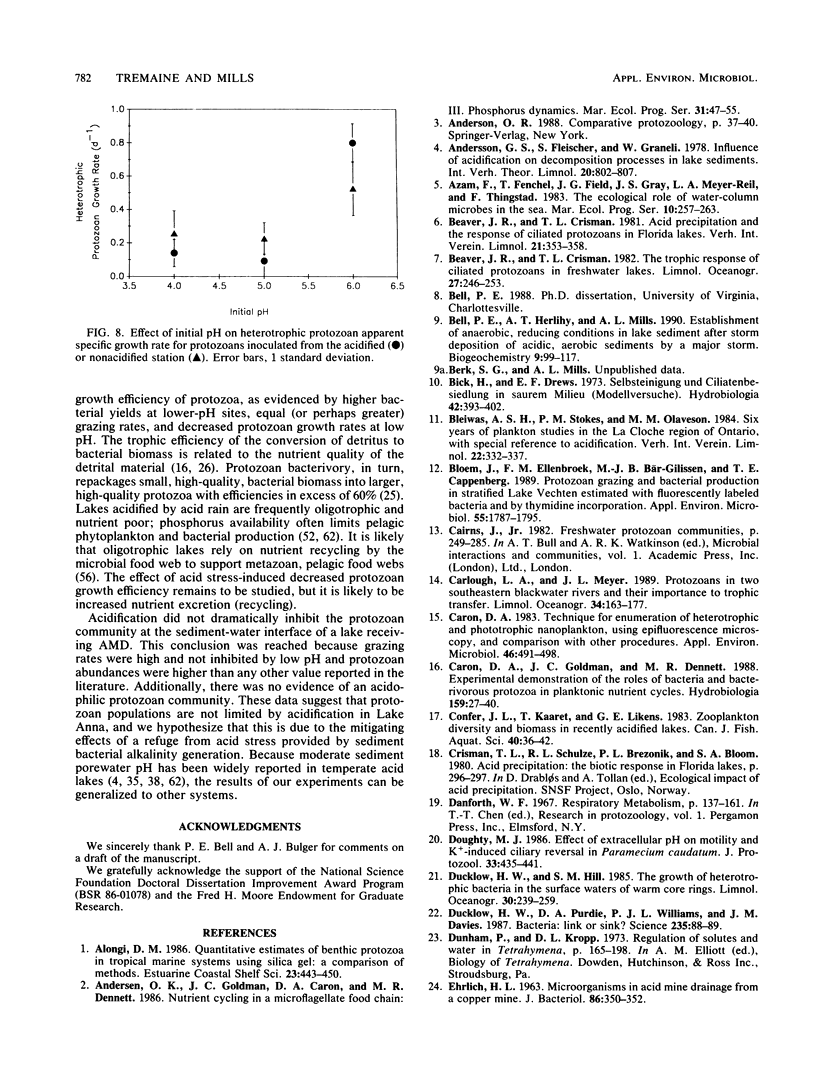


Selected References
These references are in PubMed. This may not be the complete list of references from this article.
- Bloem J., Ellenbroek F. M., Bär-Gilissen M. J., Cappenberg T. E. Protozoan grazing and bacterial production in stratified lake vechten estimated with fluorescently labeled bacteria and by thymidine incorporation. Appl Environ Microbiol. 1989 Jul;55(7):1787–1795. doi: 10.1128/aem.55.7.1787-1795.1989. [DOI] [PMC free article] [PubMed] [Google Scholar]
- Caron D. A. Technique for enumeration of heterotrophic and phototrophic nanoplankton, using epifluorescence microscopy, and comparison with other procedures. Appl Environ Microbiol. 1983 Aug;46(2):491–498. doi: 10.1128/aem.46.2.491-498.1983. [DOI] [PMC free article] [PubMed] [Google Scholar]
- EHRLICH H. L. MICROORGANISMS IN ACID DRAINAGE FROM A COPPER MINE. J Bacteriol. 1963 Aug;86:350–352. doi: 10.1128/jb.86.2.350-352.1963. [DOI] [PMC free article] [PubMed] [Google Scholar]
- Herlihy A. T., Mills A. L. Sulfate reduction in freshwater sediments receiving Acid mine drainage. Appl Environ Microbiol. 1985 Jan;49(1):179–186. doi: 10.1128/aem.49.1.179-186.1985. [DOI] [PMC free article] [PubMed] [Google Scholar]
- Hobbie J. E., Daley R. J., Jasper S. Use of nuclepore filters for counting bacteria by fluorescence microscopy. Appl Environ Microbiol. 1977 May;33(5):1225–1228. doi: 10.1128/aem.33.5.1225-1228.1977. [DOI] [PMC free article] [PubMed] [Google Scholar]
- Schindler D. W., Mills K. H., Malley D. F., Findlay D. L., Shearer J. A., Davies I. J., Turner M. A., Linsey G. A., Cruikshank D. R. Long-term ecosystem stress: the effects of years of experimental acidification on a small lake. Science. 1985 Jun 21;228(4706):1395–1401. doi: 10.1126/science.228.4706.1395. [DOI] [PubMed] [Google Scholar]
- Tremaine S. C., Mills A. L. Inadequacy of the eucaryote inhibitor cycloheximide in studies of protozoan grazing on bacteria at the freshwater-sediment interface. Appl Environ Microbiol. 1987 Aug;53(8):1969–1972. doi: 10.1128/aem.53.8.1969-1972.1987. [DOI] [PMC free article] [PubMed] [Google Scholar]
- Tremaine S. C., Mills A. L. Tests of the critical assumptions of the dilution method for estimating bacterivory by microeucaryotes. Appl Environ Microbiol. 1987 Dec;53(12):2914–2921. doi: 10.1128/aem.53.12.2914-2921.1987. [DOI] [PMC free article] [PubMed] [Google Scholar]


